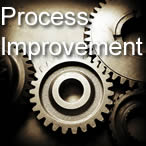Can Finance be LEAN?
Most of our readers will be familiar with ‘Lean’ methodology and principles, which have been around for a number of years. But, like most people, some readers might primarily associate ‘Lean’ with manufacturing and everything that is linked with production.
In actual fact however, ‘Lean’ can be applied to every function in a business, including Sales, Marketing, Human Resources and Finance.
The Finance function is the same as all other functions in a company: It has processes (accounting, controlling, collection and reporting to name a few), which can be optimised through the application of Lean principles.
The three key Lean principles are Adding Value, Reducing Waste and the Continuous Improvement.
In order to add value, we need to define value from the perspective of the customer. A customer is someone that expects and receives a product or a service. In that sense, the Finance function has many internal customers and many external customers: internal customers for example potentially include the Managing Director/CEO, the Board of Directors, the other functions of the company (Sales, Marketing, Logistics, Manufacturing, HR, IT), and the shareholders/Members/Partners. External customers might include suppliers, customers, potential investors, credit rating agencies, banks/lenders, external independent auditors and Government bodies such as ASIC, the ATO and the Office of State Revenue.
The Finance function needs to understand the requirements and expectations of each of its customers in order to define the value it needs to provide them with. As an example, let’s take a look at the Reporting Process. Externally, shareholders, banks, the ATO, the RBA and ASIC demand transparent and reliable information to be readily available. Internally, the MD, the Board, the head of Sales and the head of Manufacturing, for example, all require fast, accurate, meaningful information to help them make smart and informed business decisions. In order to do so, the Finance people need to focus on the reporting process: they need to focus on assuring first-time quality in order to eliminate corrections and reworks, so that the information is not only accurate, but produced and available more quickly.
Another area where value can be added is in terms of the use of Accounting terminology. Who, outside the finance department, understands the meaning and the relevance of figures reported as ‘Material usage variance’, ‘Labour cost variance’, or ‘Overhead absorption variance’? In this case, the Finance department should drop the traditional accounting terminology and present the information under labels such as ‘Cost of Material’, ‘Production Wages’, ‘Machine Repairs & Maintenance’, ‘Machine Depreciation’, ‘Waste Management’, etc. Again, it’s all about adding value by presenting accounting-related information in a way that customers can understand.
We spoke here about applying the first principle of Lean (‘adding value’) to the Finance function. In a future blog, we’ll consider the second Lean principle: ‘reducing waste’.












Trackbacks & Pingbacks
[…] previous blogs highlighted the first two principles of Lean as they relate to the Finance function, Adding Value and Reducing Waste, let’s talk about the third and final principle of Lean: Continuous […]
[…] a previous blog, we discussed applying the first principle of Lean (‘adding value’) to the Finance function. […]
Comments are closed.